November 30, 2022
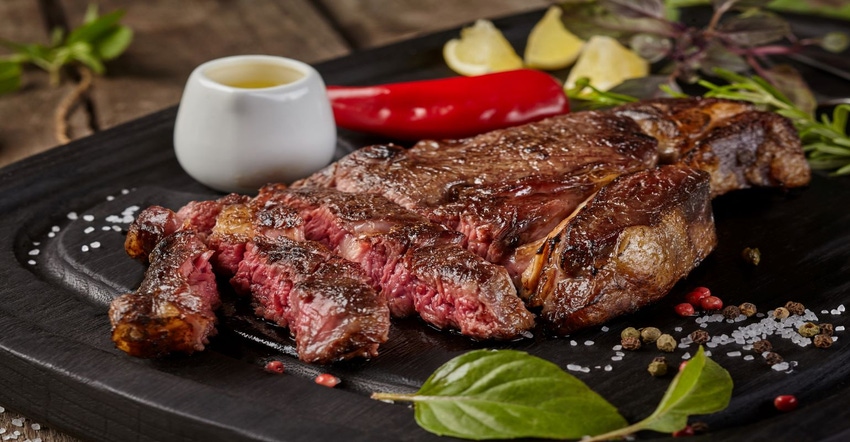
This week, I want to focus on factors impacting consumer demand for beef. It’s important to continue last week’s discussion because beef demand will be one of the most important things to monitor in 2023. Supply fundamentals will support cattle prices next year, but there is still uncertainty about what consumer demand will look like, largely reflecting macroeconomic concerns.
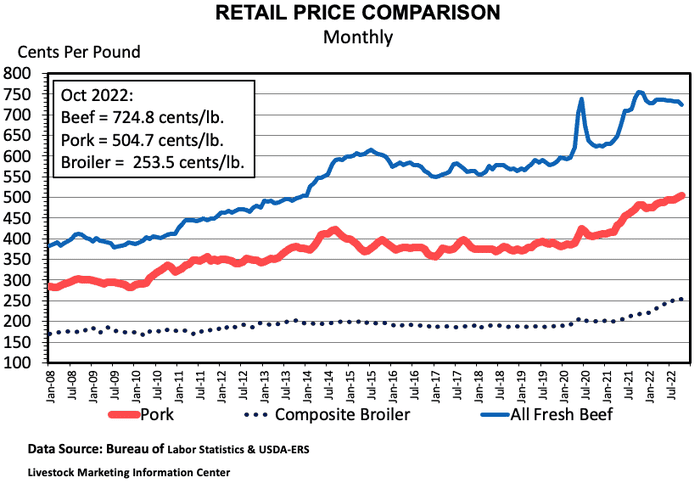
The prices of complements and substitutes will affect beef demand. The two main competing proteins for beef are pork and chicken. The first graph above shows average retail meat prices for beef, pork, and chicken. These are composite prices and do not reflect the price of any specific cut. In October, all fresh beef averaged $7.25/lb. Retail pork and chicken averaged $5.05/lb and $2.54/lb, respectively.
One concern is that consumers will substitute away from beef because beef prices are near record highs. Yes, beef is the most expensive of the three proteins in absolute terms. However, what matters for beef demand is relative prices. That is, beef’s price relative to pork and poultry (see the second figure below). If the relative price of beef increases, consumers will substitute beef for other proteins, all else constant.
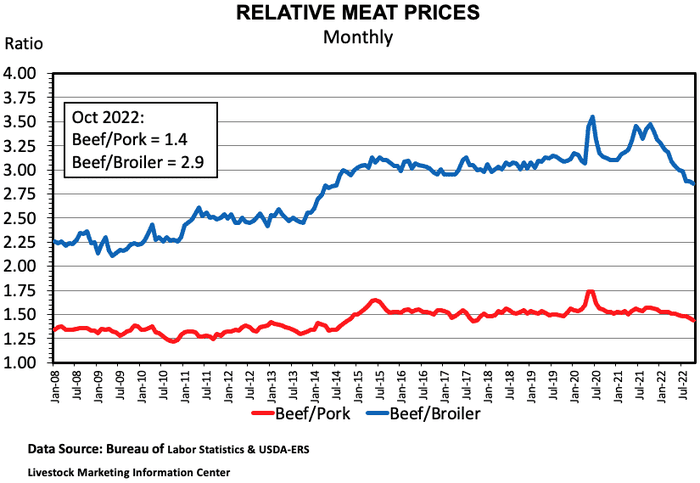
One way to examine the relative price competitiveness of beef is to look at retail price ratios – for example, the price of beef divided by the price of chicken. The second graph shows relative beef prices. Increases in the ratios mean that beef is becoming less price competitive and decreases mean that beef is more price competitive. In October, the beef/chicken price ratio was 2.9, which means that a pound of beef is 2.9 times more expensive than a pound of chicken. Notice that in 2022, beef has become more price competitive relative to chicken. Since 2015, the beef/pork relationship has remained relatively constant.
Non-price factors like consumer tastes and preferences are equally important for beef demand. The K-State Meat Demand Monitor tracks the relative importance of several meat protein attributes using monthly consumer surveys. Results consistently show that taste, freshness, price, and safety are the top four factors for consumers when purchasing protein (see the third figure). The implication is that beef demand prospects remain positive as long as the cattle industry continues to align itself with consumer preference and takes strategic steps to provide a product that hits the mark on the factors highlighted in the third figure.
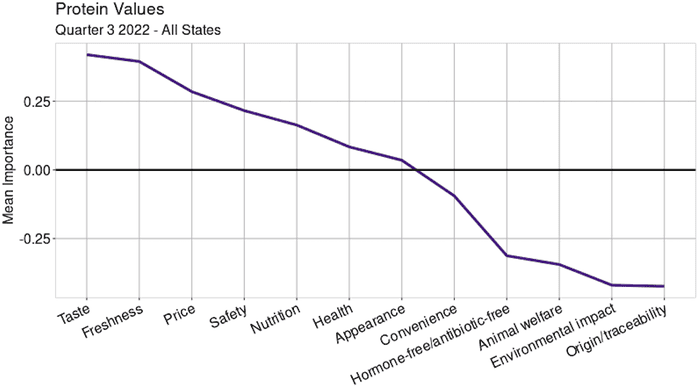
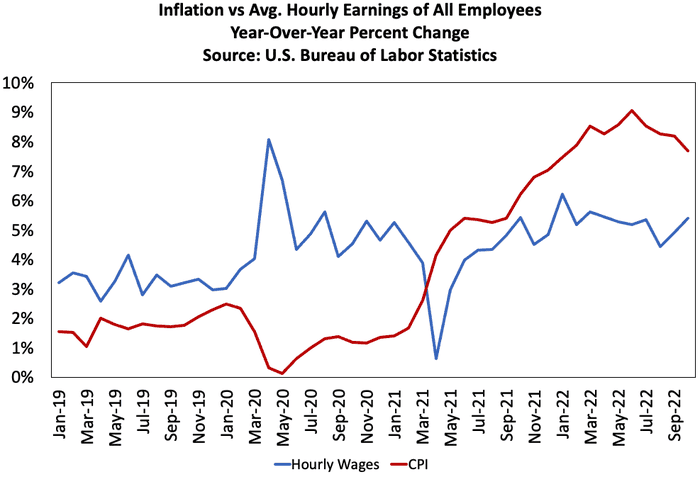
Source: University of Arkansas
You May Also Like




